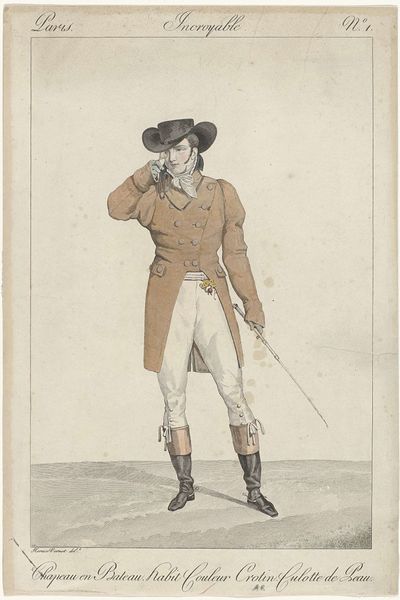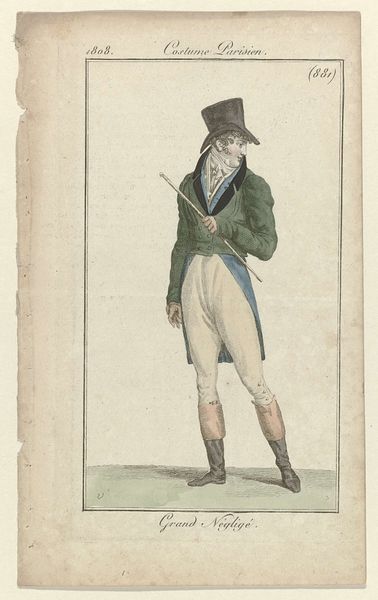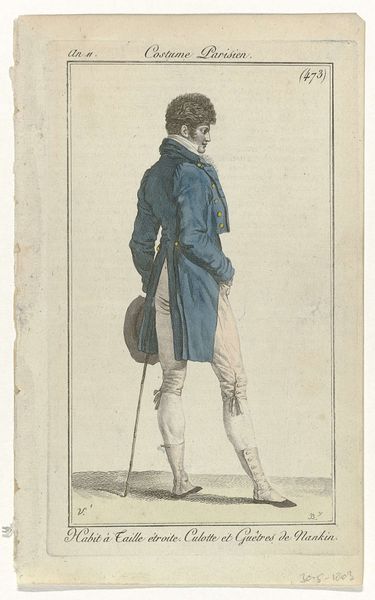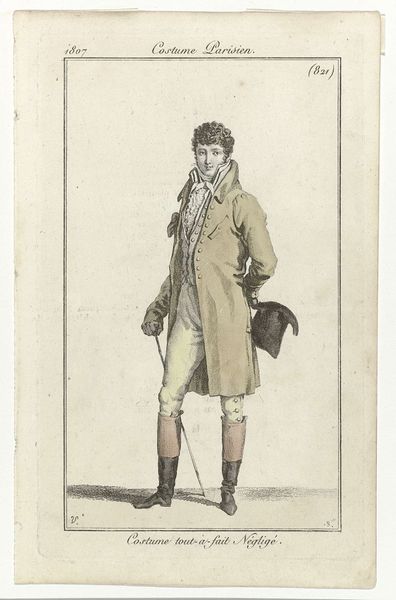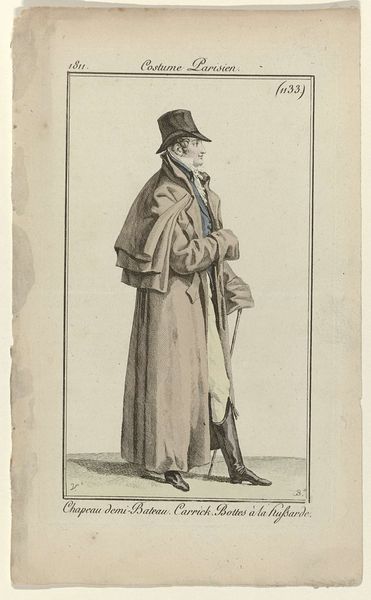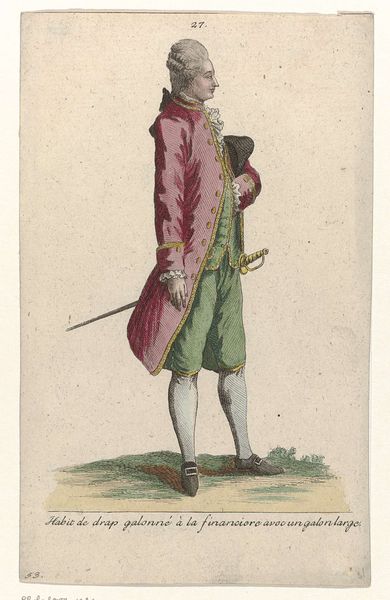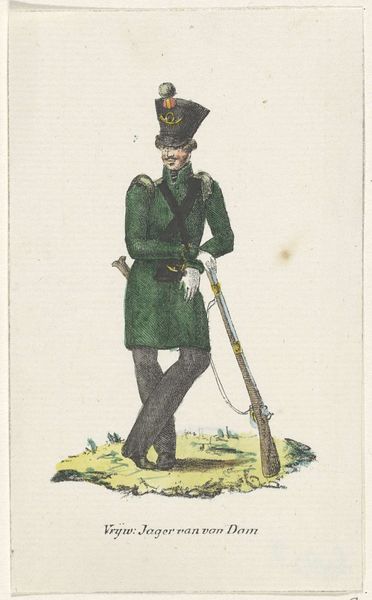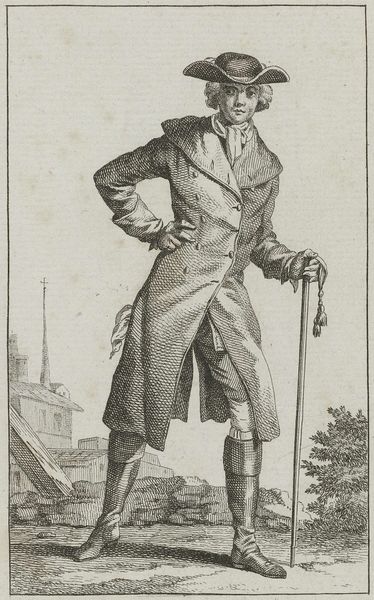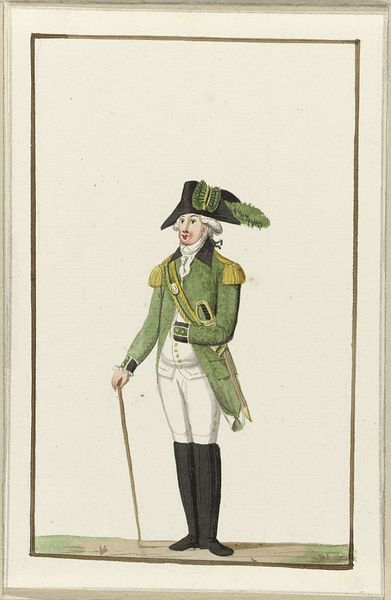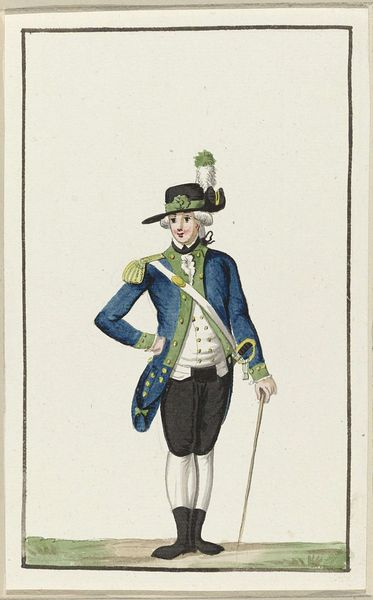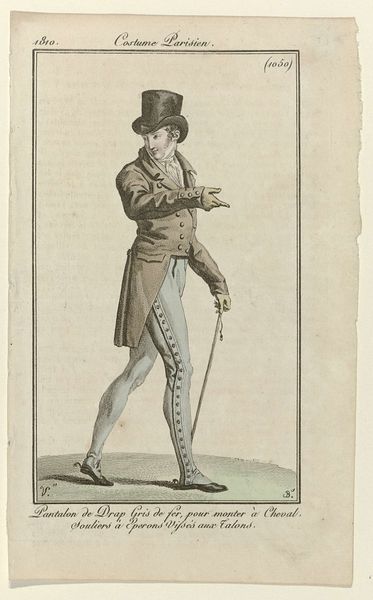
print, engraving
#
portrait
#
neoclacissism
# print
#
genre-painting
#
engraving
Dimensions: height 177 mm, width 112 mm
Copyright: Rijks Museum: Open Domain
Pierre Charles Baquoy created this print, "Journal des Dames et des Modes: Men's Fashion," around 1810, as France was undergoing significant societal shifts following the French Revolution. The print depicts a man in Parisian fashion, reflecting the sartorial elegance associated with the French elite. Yet, the image invites us to consider the complexities of gender and class within this period. The man's refined attire signifies a certain social status, embodying the privileges afforded to him by his gender and class. The detailed description of the clothing— "Overcoat with velvet collar and lapels, hussar boots"—not only showcases the fashion trends of the time, but also hints at the performative aspects of identity. Fashion became a means through which individuals expressed, and perhaps obscured, their social roles. Consider how the print walks a fine line between celebrating the luxury of Parisian fashion and tacitly acknowledging the societal inequalities that underpinned it. It serves as a poignant reminder of the intricate ways in which clothing and identity intersect with broader historical and cultural narratives.
Comments
rijksmuseum about 2 years ago
⋮
The Journal des Dames et des Modes occasionally provided coverage of men’s styles. These illustrations give a good picture of trends in mens’ clothing from 1797 to 1825. During the 18th century, gentlemen wore culotte (knee-breeches) 1. These fell out of fashion with the elimination of strict class distinctions during the French Revolution, to be replaced by a type of long trouser(s) known as pantalon à la Hussarde 2. These were worn with hussar boots. ‘Pantaloons’ 3 were trousers pulled tight with an elastic strap under the instep. Carrick 4 coats with a double collar were popular, and in the evenings men wore a special dress cloak 5.
Join the conversation
Join millions of artists and users on Artera today and experience the ultimate creative platform.
